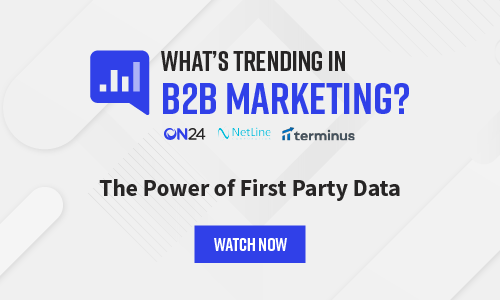Marketers are always hunting for the silver bullet in their marketing strategy and programs. The good news? They have it right under their nose in the form of first-party data.
Having the appropriate sensors set up inside of marketing experiences provides marketers with the data they need to optimize programs and to treat prospects and customers differently based on their behavior.
So, what’s the significance of first-party data in marketing? And even more importantly, how to use first-party data in marketing?
Check out this on-demand webinar to learn more about first-party data and how it impacts the marketing and sales organization. [Watch Now]
The Why Behind First-Party Data

For years, marketers focused on potential intent generated from third-party data providers. While these are important data points, many marketers over-indexed themselves against these third-party sources, overlooking the value of intent data derived directly from first-party sources.
Marketers must build up their audience-engagement muscles and correct this imbalance. Hosted digital experiences provide B2B organizations with this opportunity.
With these events, marketers can interact with audiences, gather first-party data and provide that information to sales so they can drive meaningful action.
First-Party Data 101: Understanding The Theory

If we think about each marketing tactic we create as an experience – one where we have to gather an audience through a promotional strategy – we can then think about two critical elements essential for collecting actionable first-party data. These are:
-
- How we interact with and keep audiences engaged
- The Call to Action we want our audience to take after the experience
This also gets back to the fact that not all measurement or data is created equal. In fact, it helps to classify metrics under three categories:
Activity metrics – where we look after counts of actions taken
Impact metrics – that are the result of the actions we took
Business metrics – where we show how our contributions help the overall organization
The Impact category provides us with the first-party data that will reveal behavioral insights into our audiences. As you can see, first-party data in marketing can be useful in helping us better understand our audiences.
How Marketers Can Collect Actionable First-Party Data

We can all agree that someone showing up for a webinar, for example, is a signal. But I would argue that the behavior of people during that experience is even more insightful — it’s gold for sales and marketing.
That’s why it’s important to set up experiences designed to collect that data. Here’s how to use first-party data in marketing: polling!
Polling is a great example of an experience that can capture first-party data for sales and marketing to action off of.
Here’s an illustrative hypothetical. Let’s say you created an experience where benchmarking research is shown. It is natural, during the course of that event, to ask attendees how they compare to the industry benchmark.
Based on the information attendees provide, you can action at least three separate plays.
For example, if someone responds that they are doing better than average, we could invite them to apply for an award, invite them to speak on an upcoming webinar or participate in a local roundtable.
Additionally, if someone says they are doing about the same as the industry benchmark, a sales follow-up could focus on how to take their program to the next level. This could be an important signal for a product or service you offer designed for those scenarios.
Finally, an audience member who reports that they are below industry average could receive an empathetic message filled with content related to how to remove roadblocks and help them achieve the benchmark standard.
Take Advantage of First-Party Data

This is just one example of how you can take advantage of digital experiences and capture first-party data that can be actioned across sales and marketing. First-party data in marketing can be beneficial in gathering insights about your audience and their engagement.
Certainly, the key here is also acting with speed at the end of the experience. Successful marketers do this by having playbooks built out before an experience goes live, knowing how they will treat audiences based on this first-party data in the event.
